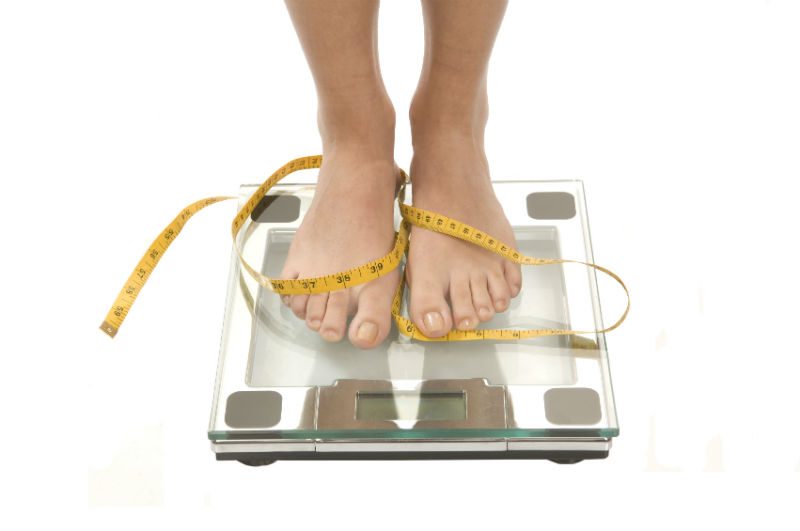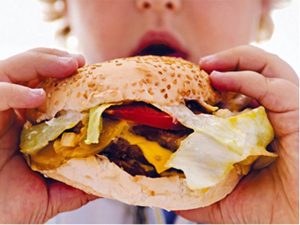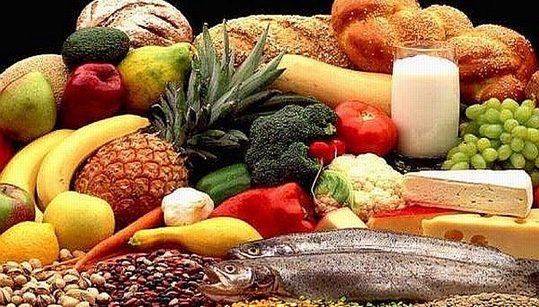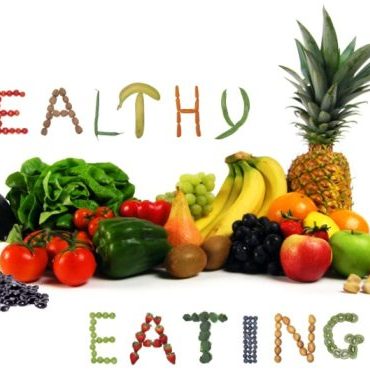 Our resident nutritionist provides us with more great tips.
Our resident nutritionist provides us with more great tips.
Why am I seeing no weight loss results? I am a healthy eater 60-70% of the time, I am a vegetarian so I eat vegetables and fruit quite regularly, I go on 20 minute runs twice a week and 40 minute runs twice a week also, I also do yoga once a week, even though I eat healthier and exercise more than other people my age. I am seeing no weight loss or even a fitter/ toner looking body, is there anything I am missing or do you have any great health tips that could see me reach my ideal body weight and look, thank you!
What does it mean to be healthy 60-70% of the time? What are you eating for the remainder of the time? You can never compare yourself to others. Everyone has different metabolic rates and genetic makeups. In addition, you are not with anyone all the time to monitor their eating and exercise. Some people are endomorphs so tend to be heavier builds, others are mesomorphs of medium build and yet others are ectomorphs with lighter builds. Your exercise is admirable, but you might need to increase it to an hour per day by doing a variety of other forms of exercise – weights, pilates, swimming. You also have to analyse your intake. As a vegetarian are you eating too much fruit, too much rice or pasta, or too much nuts? A vegetarian diet is not always low in calories and your intake may be too large for what your body needs. I suggest you start writing down everything you eat throughout the day and analyse how many calories you are eating. To lose weight you should probably aim at about 12oo calories per day. It is advisable for you to consult a dietitian to ensure that your diet is well balanced and that you are satisfying all your nutrient requirements.
Does lack of sleep contribute to obesity?
With an ever-increasing number of studies finding a direct connection between sleep deprivation and weight gain, it’s difficult to deny the cause-and-effect relationship. People who get at least seven hours of sleep per night tend to have less body fat than people who don’t. There are, of course, other factors involved in determining who becomes overweight and who doesn’t, like food intake, exercise and genes. But sleep is more integral to the process than most people realize. In a study involving 9,000 people between 1982 and 1984 (NHANES I), researchers found that people who averaged six hours of sleep per night were 27 per cent more likely to be overweight than their seven-to-nine hour counterparts; and those averaging five hours of sleep per night were 73 per cent more likely to be overweight.
Many people who are sleep deprived don’t even know it. Lots of us think there’s quite a bit of giving in how much sleep a person needs to be healthy and well functioning, but most researchers disagree, putting seven hours as the minimum for all except the very young and the very old. Besides straight numbers, there are a couple of ways to tell if you’re sleep-deprived, including:
Are you typically drowsy during a good portion of the day, especially the morning?
Are you falling asleep at night in a couple of minutes?
Most non-sleep-deprived people take about 15 minutes to fall asleep at night. Chronic sleepiness and a nearly-instant state of sleep when you get into bed are good indicators that you’re not getting enough sleep.
If you are sleep deprived, there are some obvious tie-ins to obesity, like chronic sleepiness making physical activity unlikely. But there are also a number of things going on in your body that could contribute to weight gain. In scientific studies, the most commonly cited effects of sleep deprivation are hormonal disturbances, specifically involving the hormones leptin and ghrelin.
When you don’t get enough sleep, your body has too little leptin and too much ghrelin.
 What do overweight and obesity mean?
What do overweight and obesity mean?
Overweight and obesity are defined based on a scale known as Body Mass Index (BMI). Usually, health professionals use BMI in combination with other physical measures to decide on an individual’s weight status. BMI is calculated using the equation:
BMI = weight / (height)2. The units are kg/m2.
Based on a person’s BMI and they can be categorised into one of the following groups:
§ <18.5 kg/m 2 = underweight
§ 18.5 – 24.9 kg/m 2 = healthy weight
§ 25.0 – 29.9 kg/m 2 = overweight
§ >30.0 kg/m 2 = obese
As you can see from the above categories, people with a BMI falling into the range 25.0 – 29.9 kg/m2 are considered to be overweight, while those with a BMI greater than >30.0 kg/m2 are considered to be obese.
BMI is a measure of the amount of weight a person carries for their height. It is also an indicator of health complications, with those people falling into the “healthy weight” category having the lowest disease risk 1. Being overweight or obese increases your risk of suffering diabetes, heart disease, certain cancers, arthritis and gall bladder disease2It is important to know that your BMI does not distinguish between body fat and muscle, meaning it needs to be considered alongside other body measurements when determining an individual’s weight. Waist circumference and waist-to-hip ratio are other useful measures, along with body shape.2People who carry excess fat on their abdomen have an increased health risk compared to those who deposit fatty tissue on their hips, thighs or bottom. BMI does not apply to athletes, children, teenagers and certain ethnic groups because of their different body composition and circumstances1.
 I have Polycystic Ovarian Syndrome why do I have such difficulty losing weight?
I have Polycystic Ovarian Syndrome why do I have such difficulty losing weight?
Most women at some point have to contend with weight gain. But for women with polycystic ovary syndrome (PCOS), losing weight can become a constant struggle. PCOS occurs when the ovaries don’t make enough hormones for the eggs to fully mature. Instead of releasing a mature egg during ovulation, some of the follicles in the ovaries turn into fluid-filled sacs called cysts. More than six out of every 10 women who have PCOS are also overweight. The good news is that women with PCOS can actually win the struggle against weight gain. If you have PCOS, certain lifestyle changes can help you shed kilos and reduce the disease’s severity.
PCOS makes it more difficult for the body to use the hormone insulin, which normally helps convert sugars and starches from foods into energy. This condition called insulin resistance can cause insulin and sugar ( glucose) to build up in the bloodstream. High insulin levels increase the production of male hormones called androgens. High androgen levels lead to symptoms such as body hair growth, acne, irregular periods and weight gain. Because the weight gain is triggered by male hormones, it is typically in the abdomen. That is where men tend to carry weight. So, instead of having a pear shape, women with PCOS have more of an apple shape. Abdominal fat is the most dangerous kind of fat. That’s because it is associated with an increased risk of heart disease and other health conditions.
Continue reading below…
No matter what the cause, weight gain can be detrimental to your health. Women with PCOS are more likely to develop many of the problems associated with weight gain and insulin resistance, including:
- Type 2 diabetes
- High cholesterol
- High blood pressure
- Sleep apnea
All of these conditions can lead to heart disease. In fact, women with PCOS are four to seven times more likely to have a heart attack than women of the same age without the condition.
Experts think weight gain also helps trigger PCOS symptoms, such as menstrual abnormalities and acne.
Losing weight not only can help you look better — it can also make you feel better. When you have PCOS, shedding just 10% of your body weight can bring your periods back to normal. It can also help relieve some of the symptoms of polycystic ovary syndrome. Weight loss can improve insulin sensitivity. That will reduce your risk of diabetes, heart disease, and other PCOS complications.
To lose weight, start with a visit to your doctor. The doctor will weigh you and check your waist size and body mass index. Body mass index is also called BMI, and it is the ratio of your height to your weight. Your doctor may also prescribe medication. Several medications are approved for PCOS, including birth control pills and anti-androgen medications. The anti-androgen medications block the effects of male hormones. A few medications are used specifically to promote weight loss in women with PCOS. These include:
Metformin (Glucophage). Metformin is a diabetes drug that helps the body use insulin more efficiently. It also reduces testosterone production. Some research has found that it can help obese women with PCOS lose weight.
In addition to taking medication, adding healthy habits into your lifestyle can help you keep your weight under control:
Eat a high-fibre, low-sugar diet. Load up on fruits, vegetables, and whole grains. Avoid processed and fatty foods to keep your blood sugar levels in check. If you’re having trouble eating healthy on your own, talk to an accredited practising dietitian.
Eat four to six small meals throughout the day, rather than three large meals. This will help control your blood sugar levels.
Exercise for at least 60 minutes a day on most, if not all, days of the week.
Work with your doctor to track your cholesterol and blood pressure levels.
If you smoke, get involved in a program that can help you quit.
 What is the difference between fibre (soluble, insoluble, resistant)? Nutrition and Healthy Eating
What is the difference between fibre (soluble, insoluble, resistant)? Nutrition and Healthy Eating
I was told to eat more soluble fibre to help lower my cholesterol, how does it do this? Do the other fibres the insoluble or resistant fibre lower my cholesterol too?
Confused about fibre? You’re not alone. Dietary fibre is a misunderstood nutrient. Many people know it is important but not much more than that. This article fills you in on the two main types of fibre – soluble and insoluble — where to find them, and the health benefits they provide.
Dietary fibres are found naturally in the plants that we eat. They are parts of plants that do not break down in our stomachs and instead pass through our system undigested. All dietary fibres are either soluble or insoluble. Both types of fibre are equally important for health, digestion, and preventing conditions such as heart disease, diabetes, obesity, diverticulitis, and constipation.
Soluble vs. Insoluble Fibre
Soluble fibre dissolves in water. Insoluble fibre does not. To some degree, these differences determine how each fibre functions in the body and benefits your health.
Soluble fibres attract water and form a gel, which slows down digestion. Soluble fibre delays the emptying of your stomach and makes you feel full, which helps control weight. Slower stomach emptying may also affect blood sugar levels and have a beneficial effect on insulin sensitivity, which may help control diabetes. Soluble fibres can also help lower LDL (“bad”) blood cholesterol by interfering with the absorption of dietary cholesterol.
Sources of soluble fibre: oatmeal, oat cereal, lentils, apples, oranges, pears, oat bran, strawberries, nuts, flaxseeds, beans, dried peas, blueberries, psyllium, cucumbers, celery, and carrots.
Insoluble fibres are considered gut-healthy fibre because they have a laxative effect and add bulk to the diet, helping prevent constipation. These fibres do not dissolve in water, so they pass through the gastrointestinal tract relatively intact and speed up the passage of food and waste through your gut. Insoluble fibres are mainly found in whole grains and vegetables.
Sources of insoluble fibre: whole wheat, whole grains, wheat bran, corn bran, seeds, nuts, barley, couscous, brown rice, bulgur, zucchini, celery, broccoli, cabbage, onions, tomatoes, carrots, cucumbers, green beans, dark leafy vegetables, raisins, grapes, fruit, and root vegetable skins.
Resistant starch actually goes all the way through the small intestine without being digested at all. In this way, it is more like fibre, and in some cases is classified and labelled as fibre.
Resistant starch is not traditionally thought of as a fibre. Resistant starch is the part of starchy food (approximately 10 per cent) that resists normal digestion in the small intestine. It is found in many unprocessed cereals and grains, unripe bananas, potatoes and lentils, and is added to bread and breakfast cereals as Hi-Maize. It can also be formed by cooking and manufacturing processes such as snap freezing. Resistant starch is also important in bowel health. Bacteria in the large bowel ferment and change the resistant starch into short-chain fatty acids, which are important to bowel health and may protect against cancer. These fatty acids are also absorbed into the bloodstream and may play a role in lowering blood cholesterol levels.

